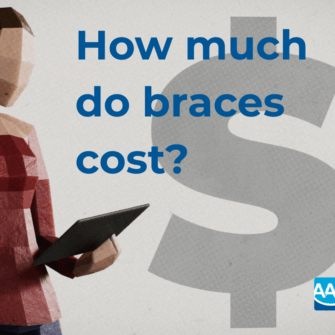You use your teeth to bite, chew, and talk countless times throughout the day. Unless something is bothersome, you probably don’t give your grill a second thought. To maintain your dental health and learn something new, gnaw on this enlightening list of ten things you may not know about your teeth!
1. A tooth can emerge with a cavity.
While rare, this phenomenon is typically linked to a condition known as Natal and Neonatal teeth. Natal teeth are present at birth, while neonatal teeth emerge within the first two months of a child’s life. When a tooth emerges with a cavity, it is typically due to underdeveloped or weak enamel, leaving the tooth more vulnerable to decay. In some cases, these early teeth might have been exposed to an environment conducive to cavity formation, such as excessive sugar in the mother’s diet or certain medications during pregnancy.
2. A cavity is one of the few things your body cannot heal.
The human body has remarkable healing abilities. For instance, when you get a cut or break a bone, the body initiates natural processes to repair the damage. However, teeth are an exception. While early-stage tooth decay can be reversed through remineralization, once a cavity has fully formed, the body cannot heal it on its own, and professional treatment is required.
A cavity, also known as tooth decay or dental caries, occurs when the hard outer layer of the tooth, known as the enamel, is damaged. This damage is primarily caused by acid produced by bacteria living in our mouths. These bacteria feed on the sugars in our food and produce acid as a byproduct, eroding the enamel and creating a cavity.
Unlike other tissues in the body, the tooth enamel does not contain living cells, so it cannot regenerate or repair itself once damaged. Unless a dentist removes the decay and inserts a filling, the cavity will continue to grow.
3. A tooth can grow upside down, sideways, or backward.
While these growth patterns aren’t extremely common, they can significantly affect oral health and treatment. If you’re experiencing abnormal growth patterns, an AAO orthodontist can properly align your teeth to mitigate speech or bite problems.
- Upside-Down Growth: In rare cases, a tooth may develop in an inverted position, with the crown facing the jawbone and the roots pointing upwards. This is most commonly seen with impacted teeth, particularly wisdom teeth. When a tooth develops upside down, it can lead to complications like misalignment of adjacent teeth, pain, and potential infection.
- Sideways Growth: Sideways tooth growth is frequently seen in wisdom teeth but can also occur in other teeth. It causes the tooth to grow at an angle instead of vertically. A tooth growing sideways can cause crowding, misalignment, and even damage to adjacent teeth.
- Rotations: There are instances where teeth can come in rotated 90 or even 180 degrees (backward). This can cause crowding, misalignment and bite changes.
4. Baby teeth hold space for the permanent teeth that follow.
One of the primary functions of baby teeth is to serve as placeholders for permanent teeth. Each baby tooth reserves a specific space in the mouth for its corresponding permanent tooth, and maintaining this space is essential to guide the permanent tooth into the correct position. If a baby tooth is lost too early, the adjacent teeth can shift into the space, potentially leading to misalignment or crowding issues.
5. Baby teeth are also known as deciduous teeth.
Much like a deciduous tree that sheds its leaves in the winter, baby teeth eventually fall out to make way for permanent teeth. This natural process comes from the Latin word “decidere,” which means to fall off or fall out and was used to coin the medical name for baby teeth: deciduous teeth.
Baby teeth typically begin to erupt around six months of age and continue to appear until about age three. There are 20 deciduous teeth – 10 in the upper jaw and 10 in the lower jaw. These teeth serve several essential functions, including aiding chewing, developing speech, and maintaining space for permanent teeth. Around the age of six, these teeth start to fall out in a process that continues until about age 12, making way for the eruption of permanent teeth.
6. Teeth by the numbers: we get two sets, 20 deciduous (baby) teeth and 32 (usually) permanent teeth.
We naturally develop two sets of teeth during our lifetime, one during childhood and one during adulthood. The primary or baby teeth consist of 20 teeth: 8 incisors, 4 canines, and 8 molars. The permanent set consists of 32 teeth: 8 incisors, 4 canines, 8 premolars, and 12 molars.
However, there may be some genetic variations in the number of teeth you have. Some people may have congenitally missing teeth, where one or more teeth never develop. Others may have supernumerary teeth or extra teeth beyond the normal number.
7. Research suggests that some sweet flavors in e-cigarette liquids may increase the risk of getting cavities.
If the highly addictive nicotine content wasn’t enough, e-cigarette liquids often contain ingredients that can negatively impact your oral health. While vaping devices are usually marketed as safer alternatives to traditional tobacco products, the sweet flavors typically contain sugars and other sweetening agents that can increase your risk of tooth decay.
Vaping-induced cavities form much like those you get from eating too much sugar. The bacteria in your mouth feed on the sugars in the liquid, producing acids that erode tooth enamel and create cavities. Prolonged exposure to the sweet flavors in e-cigarette liquids can create an environment in the mouth that is conducive to tooth decay, especially if oral hygiene is not maintained.
8. Back teeth are called “molars.”
Molars are large, flat teeth located at the back of the mouth. Most adults have 12 molars, with three on each side of the upper and lower jaws. Molars are responsible for grinding and crushing food during chewing, which is essential for digestion as they break food down into smaller, more manageable pieces. The molars’ large, flat surface, strong roots, and sturdy structure suit them for this grinding action.
9. Diet soda and sports drinks can be as tough on teeth as regular soda.
While diet sodas and beverages tout a lower sugar content, they can be just as detrimental to oral health as the non-diet versions. This is primarily due to their high acidity. These drinks often contain phosphoric acid, citric acid, or other acidic compounds to enhance flavor and shelf life, which can also erode tooth enamel.
Frequent consumption of acidic and sugary beverages can alter the oral environment, promoting the growth of harmful bacteria and reducing saliva flow. Saliva plays a crucial role in neutralizing acids and remineralizing tooth enamel. Limiting their consumption is important to mitigate the effects of diet sodas and sports drinks on teeth. When consuming these beverages, it’s advisable to use a straw to minimize contact with teeth and to rinse the mouth with water afterward to help neutralize the acids. Chewing sugar-free gum can also stimulate saliva production, helping to neutralize acids and remineralize enamel.
10. The part of the tooth you see, the crown, is only about a quarter to a third of the entire tooth.
A tooth is divided into two main parts: the crown and the root. The crown is the visible part of your tooth, while the root is the portion that extends into the jawbone and is not visible. While the crown-to-root size ratio can vary, the crown typically represents about one-quarter to one-third of the tooth’s total length. The remaining part, the root, is hidden under your gums.
Create a Healthy Bite with an AAO Orthodontist
Now that you have mastered these tidbits about teeth, you can amaze your friends and family with your dental trivial knowledge. But your teeth are anything but insignificant. Healthy teeth and gums are critical contributors to your overall health. If your teeth are misaligned, developed incorrectly, or experiencing bite problems, AAO orthodontists can help you align your teeth and jaws for a healthy and beautiful smile.
When you choose an AAO orthodontist for orthodontic treatment, you can rest assured that you have selected a highly skilled specialist. Orthodontists are experts in orthodontics and dentofacial orthopedics and possess the skills and experience to give you your best smile. Locate AAO orthodontists through Find an Orthodontist and schedule your consultation today.



